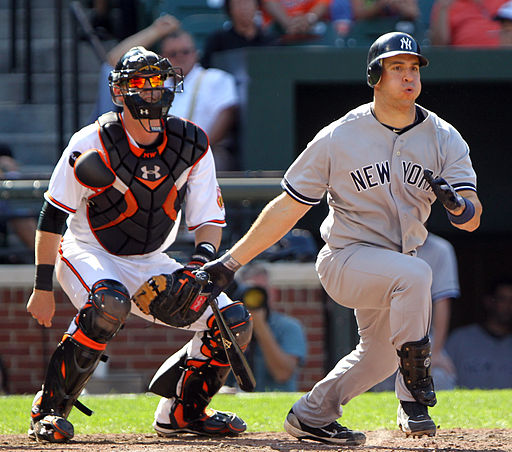Hello readers, I’d like to thank everyone for the warm reception. It is truly an honor and a privilege to write for such a passionate, dedicated group of fans, on a blog that I have been reading since its inception (not to mention reading Mike, Ben, and Joe prior to that). It’s also fantastic to be reunited with my former partners-in-crime Moshe, Larry, Matt, and (briefly) Stephen. I look forward to getting to share my thoughts on my beloved Yankees, and will likely write on a wide variety of topics. My goal while writing here is not only to produce quality content, but also to interact with the RAB commentariat, so feel free to leave comments on this or any other piece I write here. I can’t promise I will get to reply to every one (other commenters can likely answer certain questions better than I could), but I will try to get to as many as I can. Also, feel free to hit me up on Twitter (@Eric_J_S) where I talk baseball, and a variety of other topics. And away we go…

One of the interesting things about baseball analysis over the years is its evolution as new information has become available. Rudimentary fielding metrics gave birth to several ways of quantifying defense, including Total Zone and UZR (both of which are still works in progress). These give baseball fans a new way of measuring a player’s defensive skill, as opposed to relying on the eye test and number of errors committed. Pitch F/X allows us to dig deep into granular data on pitch velocity, spin, and movement, giving us new insight on what makes for an effective pitch, and allowing for comparisons of a pitcher’s outings (my old TYA compadre Michael Eder has been doing some phenomenal work using Pitch F/X, which definitely worth checking out).
Another recent addition to the toolbox is Baseball Prospectus and Brooks Baseball’s new batter Pitch F/X cards, which give information on how effective each player is at hitting each pitch type at each location in the strike zone. While some of the information provided by this tool may not be particularly revolutionary (for example, batters tending to be better hitters on balls in the strike zone) it nonetheless provides some interesting quantitative data to back up visual scouting reports. I thought it would be interesting to take a look at the player cards of Yankee hitters to see if the data confirm or contradict conventional wisdom about the Yankees’ strengths and weaknesses. If you have a few moments to play around with the tool, you can slice and dice the data by pitch type, pitcher handedness, and a variety of outcome measures. Apologies in advance that I couldn’t figure out a way to import the tables, but feel feel free to click the links below to see the relevant data.
Mark Teixeira was the first player I looked at, mainly because his approach at the plate as a left-handed hitter has been much-criticized during his Yankee tenure. Conventional wisdom suggests that Teixeira is tantalized by the short porch in right, and consequently has become excessively pull-happy. From the pitching perspective, pitchers tend to keep the ball away from Tex to get him to roll over the ball and ground out. The data do seem to suggest such an approach exists. Looking at the pitch frequency table, it is evident that pitchers have been staying away from Tex. Only about 11% of pitches (total, which includes balls out of the zone) Tex faced were on the inner third, while nearly 20 percent were in the outer third of the zone. Tex’s ground ball rates by location suggest that he is very likely to hit outside pitches on the ground, compared to pitches that are middle-in.
The outcome measures, however, tell a different story. Teixeira’s batting average and TAv (a park adjusted measure of offensive value scaled to batting average, basically BP’s version of wRC+/wOBA) show that he has actually been very effective at hitting outside pitches, and relatively ineffective at hitting inside pitches. This surprising outcome could suggest that Teixeira, perhaps with the help of Kevin Long, has modified his swing and approach to give him greater success against outside pitches. This pattern was fairly different when compared to 2011, where Tex’s performance against outside pitches was less impressive, and his numbers were better against inside pitches than they have been in 2012. This may seem to be a success, except for the fact that Teixeira has actually been less productive in 2012, even though he has handled outside pitches better. This may suggest (totally speculating here) that by messing with his approach, perhaps Teixeira lost some of his aggressiveness on inside pitches that allowed him to get around quickly and yank them out of the park.
I’ll stop with Tex today, because this article is already starting to run long. Let me know in the comments if you have agree or disagree with my take on Tex’s left-handed performance, and if you found this type of analysis interesting at all. The data are relatively new and I haven’t had much time to play around with them yet, but I’ll see if I can find a better way to display them in future posts. These data may not turn up anything especially earth-shattering, but they definitely allow for an effective method of checking whether our underlying assumptions about hitter tendencies are accurate. Thanks for reading, and enjoy the rest of your afternoon.
Leave a Reply
You must be logged in to post a comment.